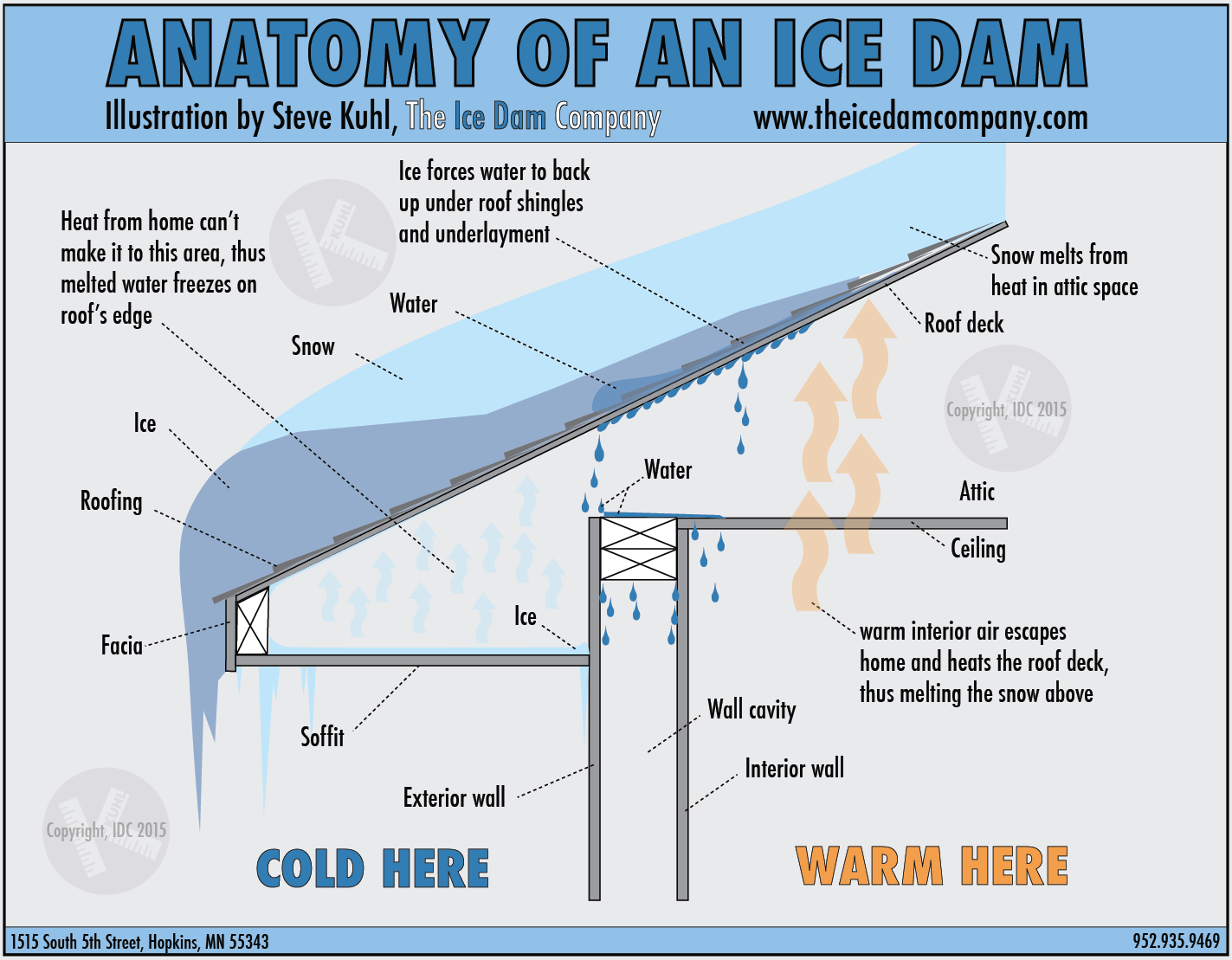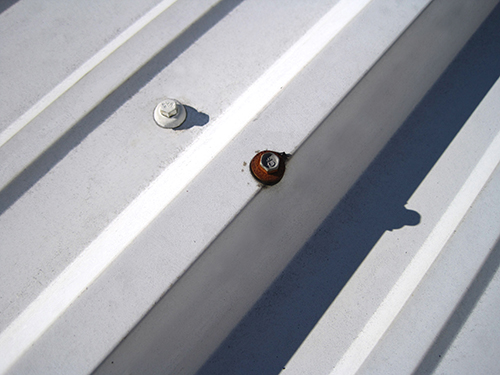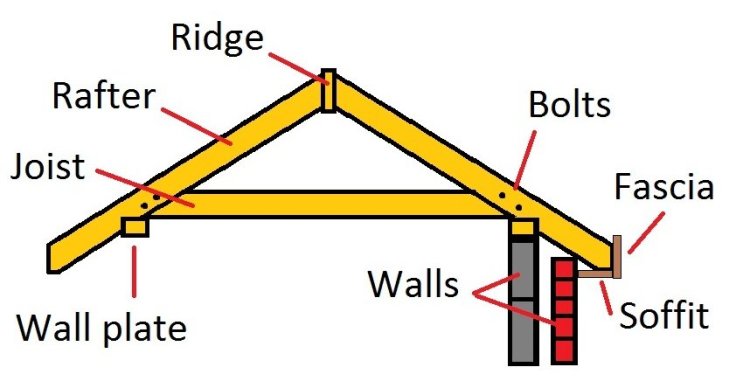What’s an Ice Dam? How Do You Treat and Prevent Them?
All About Ice Dams
Late February 2021 was a truly historic time for Texas weather. Among the most newsworthy effects include a disastrous 100-year pile up on Interstate 35, the longest time San Antonio spent below freezing since 1947, and possibly earning its spot as the most expensive natural disaster since Hurricane Harvey with costs potentially exceeding $125 billion.
Social media warnings about how to deal with ice dams circulated around the web. So what is an ice dam? Does it affect your roof? How should you prepare in case another ice storm hits?
What is an ice dam?
An ice dam is a ridge of ice that forms at the edge of the roof and prevents snow and water from draining off the roof. As it becomes larger, the melting snow stays behind the dam and makes its way under the shingles. This can cause leaks within your home.
Even while the outside temperature is below freezing, the warmer temperatures in your attic will melt the bottom of the snow piled up on the roof. The melted snow then dribbles down your roof until it hits a colder section – often the soffits, valleys, or gutters. The melted snow then re-freezes and creates an ice dam!

Anatomy of an Ice Dam.
Image Credit: Ice Dam Company
How does an ice dam damage a roof?
Here’s the problem: the melted snow pools behind the ice dam and looks for a place to go. Unfortunately, that would be your attic, exterior walls, and crawl spaces. Even if water doesn’t make its way into your home, it can rust the fasteners used to install your shingles, resulting in creating their own leak points.
In Texas, our snow and ice doesn’t hang around for too long. But it’s wise to know all the risks associated with ice dams in case you move out-of-state.
 Side-by-side comparison of a rusted roof fastener and a new roof fastener.
Side-by-side comparison of a rusted roof fastener and a new roof fastener.
Image Credit: MBCI
Tips for dealing with ice dams
- Consider buying a roof rake. Roof rakes are specifically designed to remove snow and prevent ice dams. But remember: only pull the rake downwards. Side-to-side movement may damage shingles.
- Take a fan into the attic. If water has already found its way into your attic, try aiming a box fan at the leak point. A dose of cold air may be able to freeze the water. This is a very short-term fix.
- Never get on the roof. Climbing on your roof during the dry season is dangerous enough. Slippery ice elevates your risk for injury to an unreasonable level. Contact a local roofing professional.
- Schedule a roof inspection immediately after the winter seasons. Rust, broken seals, and water entry points are serious problems for your roof. Have a RoofCrafters team member take a deeper look to ensure small problems don’t get out of hand.
Permanent solutions for ice dam prevention
The best solution for preventing ice dams is to ensure that the attic can “breathe”. Since ice dams become problematic when the warmer air within the attic causes snow to melt and leak water into the home, bringing the attic closer to the outdoor temperature will reduce the risk.
The goal is to have the entire roof at the same temperature as the eaves.
- Have ridge and soffit vents installed. The ridge of your roof is at the top – where the slopes meet together. Soffit vents are placed around the bottom edges of your roof. As a general rule of thumb, you’ll want one square foot of ventilation for every three-hundred square feet in the attic.
- Replace chimney flashing. Chimney flashing can last up to thirty years. As it ages, it becomes less effective.
- Direct exhaust to the outside. Bathroom, kitchen, and dryer vents should never escape through the soffit.
 Roof component diagram.
Roof component diagram.
Image Credit: Carpentry Tips and Tricks
Time for a roof inspection!
No roof lasts forever. But scheduling regular inspections will certainly extend its lifespan. Let’s take a closer look at your roof. Get in touch with a trusted Central Texas roofer since 1981.
